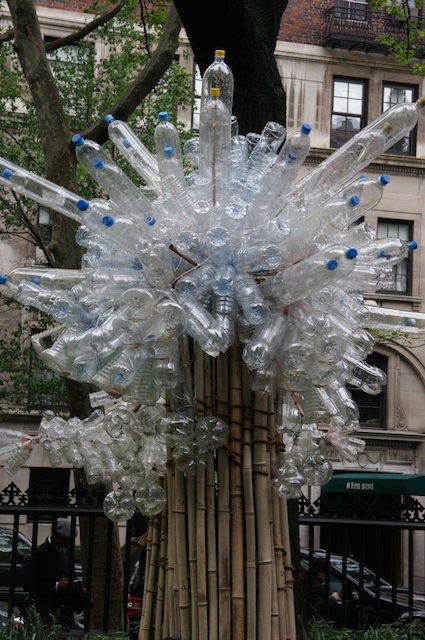| fountain Marcel Duchamp |
¢The term found art—more commonly found object (French: objet trouvé) or readymade—describes art created from the undisguised, but often modified, use of objects that are not normally considered art, often because they already have a non-art function.
| Bicycle wheel Marcel Duchamp |
Marcel Duchamp was the originator of this in the early 20th century. Found art derives its identity as art from the designation placed upon it by the artist. The context into which it is usually also a highly relevant factor. The idea of dignifying commonplace objects in this way was originally a shocking challenge to the accepted distinction between what was considered art as opposed to not art.
| Bottle Rack |
Marcel Duchamp coined the term readymade in 1915 to describe his found art. Duchamp assembled the first readymade, entitled Bicycle Wheel in 1913, the same time as his Nude Descending a Staircase was attracting the attention of critics at the International Exhibition of Modern Art. His Fountain, a urinal which he signed with the pseudonym "R. Mutt", confounded the art world in 1917. His Bottle Rack is a bottle drying rack signed by Duchamp, and is considered to be the first "pure" readymade.
| Nude descending the Staircase |
¢Found art, however, has to have the artist's input, at the very least an idea about it, i.e. the artist's designation of the object as art, which is nearly always reinforced with a title. There is mostly also some degree of modification of the object, although not to the extent that it cannot be recognized. The modification may lead to it being designated a "modified", "interpreted" or "adapted" found object.
FOUND ART EVOLVES

A specific sub genre of found art is known as trash art or junk art. These works are primarily comprised from components that have been discarded. Often they come quite literally from the trash. Many organizations sponsor junk art competitions.



